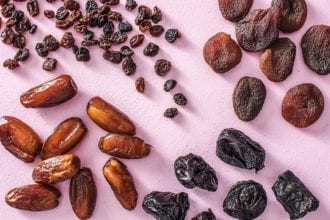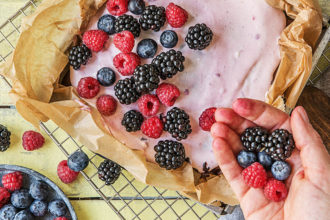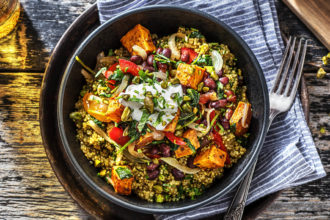13 Healthy Fats To Include In Your Diet
November 7, 2018
Despite their bad reputation, fats are an essential part of maintaining a balanced diet. They provide energy, are an important source of vitamins and are important building blocks for your cells. That said, too much bad fat can be harmful to your health. But which fats are good, and which ones fall into the ‘bad’ category? For guidance on incorporating healthy fats into your meals, check out our collection of healthy recipes, where you’ll find nutritious and balanced options.
Saturated ‘unhealthy’ fatty acids
To give a simple definition, saturated fat is a “bad” fat found in relatively high amounts in many meats and dairy products, including full-fat milk, cheese, butter, and cream. A lot of pre-prepared foods like supermarket pizza, biscuits and crisps contain a high quantity of saturated fat. It is wise to limit the use of these products or replace them with products that contain more unsaturated fats, in order to reduce the risk of developing cardiovascular disease, obesity and other health problems.
How to reduce your intake of saturated fats
- Swap full-fat dairy options for reduced fat or unsaturated fat options. Instead of reaching for the full-fat option, try opting for skimmed or semi-skimmed. Instead of covering your mash with butter, try using vegetable oil instead.
- Cook cleverly. Poaching, boiling, baking, steaming, and grilling meat, fish, or eggs use less fat than frying. When frying is necessary, use vegetable oils or products made from them, as they are a good source of unsaturated fat. Another way to reduce sat fats is to trim the fat off meat and taking the skin off chicken breasts.
Unsaturated ‘healthy’ fatty acids
Unsaturated fat is found in nuts, seeds, oily fish, and vegetable oils such as sunflower, soya and olive oil, as well as vegetable oil-based soft spreads. Omega-3 and -6 are unsaturated fats. Regular and uniform consumption of these fats helps lower the LDL cholesterol of your blood, reducing the risk of cardiovascular disease, as well as helping to stabilise your sugar levels.
What are ‘Trans’ fats?
Trans fats are a type of unsaturated fatty acids, but anything but good for you. This has to do with the structure of the trans fat, which is difficult for your body to process, so it is important to keep the intake to a minimum (if not completely cut them out). Trans fats are naturally present in certain products and arise additionally in the industrial (partial) hardening of fats. This hardening is done in order to increase the shelf life of certain products such as cakes, cookies and sweets.
Healthy Fats and How to Eat Them
Peanut butter: Another source of healthy protein, and great with fruit or spread over wholemeal bread. A sliced apple with peanut butter is a favourite in the HelloFresh office. Alternatively, blend a tablespoon with a banana, nut milk and some oats for an easy wake-up call smoothie.
Our Chicken Satay Skewers are also a great way to use peanut butter in savoury dishes that the whole family will love.

Nuts and Seeds: Almonds, hazelnuts, walnuts and macadamia nuts are all great sources of unsaturated fats and make a great afternoon snack to beat energy lows. Make sure you choose the unsalted varieties, as shop-bought roasted nuts are often cooked in lots of oil. Try taking a handful (around 30g) as a nutritious alternative to chocolate and sweets. We also love sprinkling them over soups, dals, and salads like our Coconut Dal.

Vegetable oils: These can help you reduce saturated fats in your diet and increase the unsaturated fats. Examples of foods you could avoid by cooking with vegetable oils include butter and coconut oil.
Oily Fish: Like sardines, salmon is an oily fish often associated with helping to maintain good heart function. Easy to cook and bursting with plenty of flavour, it’s the perfect ingredient for a healthy dinner. Try replacing red meat with oily fish like salmon. Our Pan Fried Salmon with Warm Potato Salad is a deliciously simple recipe to impress friends and family with.
Curious about how many healthy fats you actually consume? The fats in all of our recipes are detailed in the nutritional breakdown of our recipe cards.









